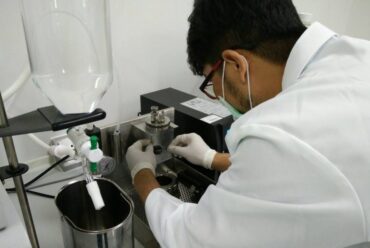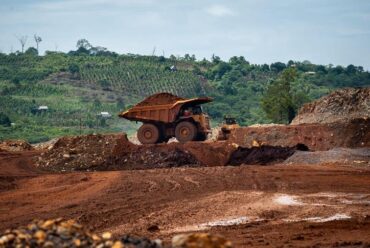Comprehensive Guide to Mining Safety Talks
The mining industry is known for its high risk of workplace accidents. Thus, occupational safety and health (OSH) plays a crucial role in mining operations. One effective way to raise awareness and educate workers about OSH in mining is through Safety Talks.
This article provides a comprehensive overview of Safety Talks for the mining sector, covering its definition, objectives, key components, and tips to improve its effectiveness.
What Is a Mining Safety Talk?
A Mining Safety Talk is a short, informal discussion session held regularly in the mining workplace. Its primary goal is to remind workers about safety aspects, potential hazards, and the necessary preventive and corrective measures. These talks are usually conducted before starting a shift or during shift changes.
Objectives and Benefits of Mining Safety Talks
The implementation of Safety Talks in the mining environment offers several essential objectives and benefits:
- Raising worker awareness about the importance of workplace safety.
- Refreshing workers’ knowledge of mandatory safety procedures.
- Informing workers about new hazards present in the work area.
- Fostering a strong safety culture within the mining workplace.
- Reducing the risks of accidents and occupational diseases.
- Enhancing productivity and operational efficiency.
Key Components of Mining Safety Talks
1. Hazard Identification
The first component involves identifying potential hazards that may exist in the mining area. These hazards could be physical, chemical, biological, or ergonomic, each posing risks to workers’ safety and health.
2. Risk Assessment
After identifying hazards, the next step is to conduct a risk assessment. This involves evaluating the likelihood and severity of incidents arising from identified hazards. Effective risk assessment helps in prioritizing which risks require immediate action.
3. Risk Control
The final component involves discussing the measures that can be implemented to mitigate or eliminate risks. Common risk control methods include:
- Elimination: Removing the hazard entirely.
- Substitution: Replacing hazardous materials or processes with safer alternatives.
- Engineering controls: Using machinery or equipment to reduce exposure to hazards.
- Administrative controls: Implementing policies and procedures to enhance safety.
- Personal protective equipment (PPE): Using appropriate protective gear as a last line of defense.
Essential Topics in Mining Safety Talks
1. Personal Protective Equipment (PPE)
Proper use of PPE is vital for protecting workers from hazards. Safety Talks should cover the specific PPE required for each task, proper usage guidelines, maintenance, and replacement schedules.
2. Handling Hazardous Materials
Mining operations often involve dangerous substances like chemicals and explosives. Safety Talks should address safe handling, storage, and disposal procedures, along with actions to take in case of spills or leaks.
3. Equipment and Machinery Safety
Mining involves the use of heavy machinery. Workers must be reminded of safe operating procedures, routine inspections, and maintenance practices. Emphasizing awareness of danger zones around operating machinery is also essential.
4. Emergency Evacuation Procedures
In emergencies such as fires, landslides, or floods, a swift and organized evacuation is critical. Regular discussions on evacuation procedures, muster points, and the use of emergency equipment like fire extinguishers are essential.
Read also: Map of the Distribution of Mining Goods in Indonesia
Effective Techniques for Delivering Safety Talks
1. Clear and Simple Language
The effectiveness of a Safety Talk depends on the speaker’s ability to convey information clearly. Using simple, easy-to-understand language helps ensure that all workers, regardless of education level, can grasp the message.
2. Real-life Examples and Case Studies
Sharing real incidents or near-miss experiences can make Safety Talks more relatable and impactful. These stories emphasize the importance of safety practices and foster greater vigilance among workers.
3. Interactive Participation
Encouraging active participation from attendees enhances engagement. Asking questions, seeking opinions, or inviting workers to share their own experiences can make sessions more dynamic and memorable.
Ideal Frequency and Duration of Safety Talks
Safety Talks should ideally be conducted daily before the start of shifts. The recommended duration ranges from 5 to 15 minutes. Sessions that are too long may lead to loss of concentration, while overly brief sessions may fail to convey critical information effectively.
Documentation and Evaluation
Every Safety Talk should be documented, noting the topics covered, participants present, and any feedback received. Documentation helps in evaluating the program’s effectiveness and identifying areas for improvement. Periodic evaluations also assist in planning future topics.
Read also: Mining Industry Indonesia: Prospects, Challenges and the Future
The Role of Management in Supporting Safety Talks
Management’s support is vital to the success of the program. Managers should demonstrate their commitment by actively participating in the sessions, providing necessary resources, and addressing safety issues raised during the talks.
Challenges in Implementing Mining Safety Talks
Several challenges can arise in conducting effective Safety Talks, such as:
- Participant fatigue from repetitive topics.
- Maintaining consistent quality in presentations.
- Time constraints due to tight work schedules.
- Language barriers in multinational workforces.
Overcoming these challenges requires creativity in presentation, strong organizational commitment, and a willingness to innovate.
Tips for Enhancing the Effectiveness of Safety Talks
- Vary delivery methods to prevent monotony.
- Involve workers in planning and delivering the talks.
- Use visual aids such as posters, videos, or live demonstrations.
- Connect topics with current events or safety trends in the industry.
- Follow up to ensure the implementation of discussed points.
- Recognize workers who actively participate and apply safety practices.
- Continuously improve the program based on feedback and data analysis.
Conclusion
Safety Talks are essential in promoting workplace safety and health within the mining industry. Through consistent and effective implementation, companies can enhance workers’ safety awareness, minimize risks, and foster a strong safety culture.
The success of Safety Talks depends on management’s commitment, the quality of materials and delivery, and active participation from all employees. By continuously innovating and adapting to technological developments and industry trends, Safety Talks will remain a valuable tool for ensuring safety in this challenging industry.







